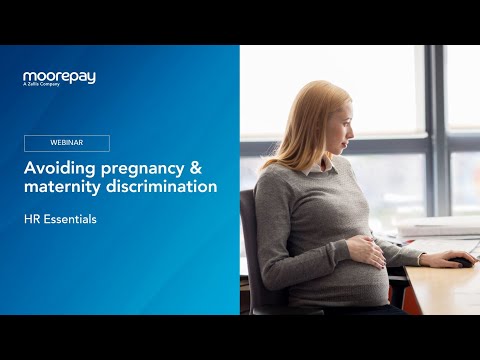
Welcome to this informative article on navigating pregnancy discrimination lawsuits. In this comprehensive guide, we will explore the legal landscape surrounding pregnancy discrimination in the United States and provide you with valuable insights to help you achieve a favorable outcome in your case. It is important to note that while we strive to provide accurate and up-to-date information, it is always prudent to cross-reference with other sources or consult with legal professionals to ensure the best course of action for your specific circumstances.
Now, let’s dive into the complex world of pregnancy discrimination laws, understanding your rights, and how to effectively navigate the legal process if you believe you have been a victim of such discrimination.
Navigating a Successful Pregnancy Discrimination Lawsuit: Key Strategies for Success
Title: Navigating Pregnancy Discrimination Lawsuits: A Comprehensive Guide to Achieving a Favorable Outcome
📋 Content in this article
Introduction:
Pregnancy discrimination in the workplace is a serious issue that affects many women across the United States. It is important for individuals who have faced pregnancy discrimination to understand their rights and the legal avenues available to them. Navigating a pregnancy discrimination lawsuit can be complex, but with the right strategies and guidance, you can increase your chances of achieving a favorable outcome. This comprehensive guide outlines key strategies to help you navigate through the legal process successfully.
Key Strategies for Navigating a Pregnancy Discrimination Lawsuit:
1. Understanding Pregnancy Discrimination Laws:
– The Pregnancy Discrimination Act (PDA): This federal law prohibits employers from discriminating against employees based on pregnancy, childbirth, or related medical conditions.
– State Laws: Some states have additional protections for pregnant employees, such as extended leave or reasonable accommodations. Familiarize yourself with the specific laws in your state to strengthen your case.
2. Documenting Discriminatory Actions:
– Keep a Detailed Record: Document any incidents or conversations related to pregnancy discrimination. Include dates, times, locations, individuals involved, and specific details of each occurrence.
– Preserve Relevant Evidence: Save emails, text messages, memos, and any other evidence that supports your claim of pregnancy discrimination.
3. Seeking Legal Advice:
– Consult an Employment Attorney: It is crucial to seek legal advice from an experienced employment attorney specializing in pregnancy discrimination cases. They can evaluate the strength of your case and guide you through the legal process.
– Find an Attorney with Expertise: Look for an attorney who has a proven track record of handling pregnancy discrimination cases and achieving favorable outcomes for their clients.
4. Filing a Complaint:
– Contact the EEOC: Before filing a lawsuit, you must generally file a complaint with the Equal Employment Opportunity Commission (EEOC).
Understanding Damages in Pregnancy Discrimination Lawsuits in the United States
Understanding Damages in Pregnancy Discrimination Lawsuits in the United States
Pregnancy discrimination is a form of workplace discrimination that occurs when a woman is treated unfavorably due to her pregnancy, childbirth, or related medical conditions. The United States has enacted various laws to protect the rights of pregnant employees and ensure they are not subjected to unfair treatment in the workplace. One important aspect of pregnancy discrimination lawsuits is the concept of damages, which refers to the compensation that a plaintiff may be entitled to if they are successful in their legal claim.
To better understand damages in pregnancy discrimination lawsuits, it is crucial to be aware of the various types of damages that may be awarded. These can include:
Title: Navigating Pregnancy Discrimination Lawsuits: A Comprehensive Guide to Achieving a Favorable Outcome
Introduction:
Pregnancy discrimination is a critical issue that affects the rights and well-being of individuals in the workplace. As an expert in US law, I have prepared this comprehensive guide to help individuals navigate pregnancy discrimination lawsuits. It is important to note that while this article provides valuable information, readers should verify and cross-reference the content with applicable federal and state laws, as well as consult with legal professionals for specific advice.
1. Understanding Pregnancy Discrimination:
Pregnancy discrimination occurs when an employer treats an employee unfavorably because of pregnancy, childbirth, or related medical conditions. It is essential to recognize that pregnancy discrimination is prohibited under federal law, specifically Title VII of the Civil Rights Act of 1964, as well as the Pregnancy Discrimination Act (PDA) of 1978. These laws aim to protect employees from discriminatory practices during pregnancy and ensure equal employment opportunities.
2. Recognizing Prohibited Actions:
Employers are prohibited from various discriminatory actions against pregnant employees, such as:
3. Establishing a Prima Facie Case:
To build a strong pregnancy discrimination lawsuit, it is important to establish a prima facie case by demonstrating:
4. Documenting Evidence:
Documenting evidence is crucial in any pregnancy discrimination case. Keep a record of:
